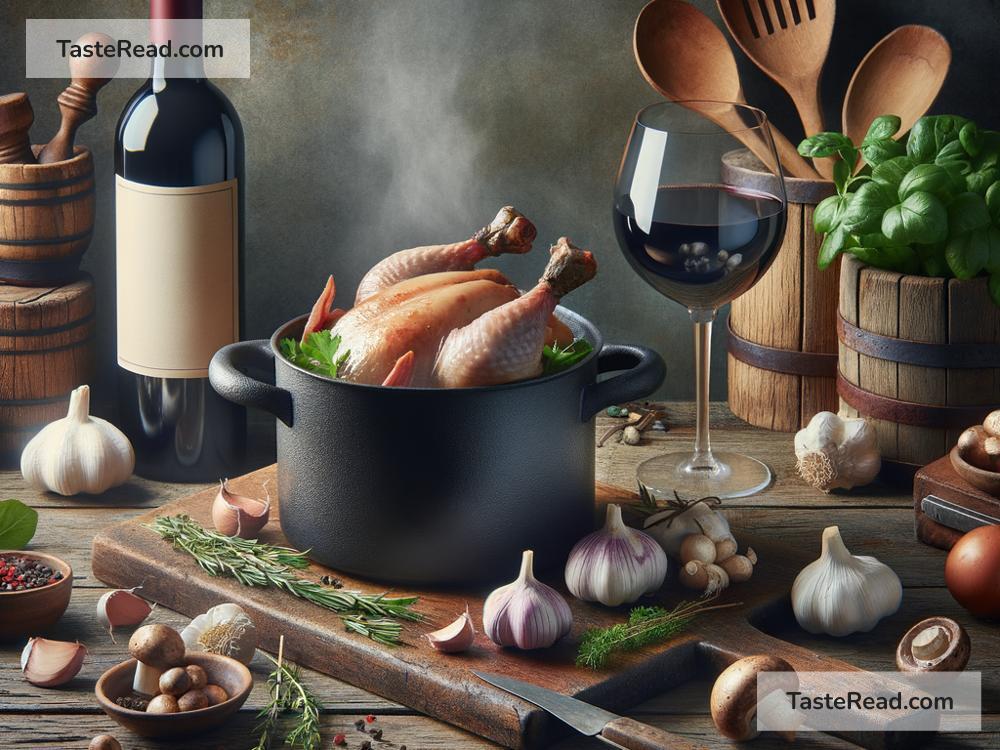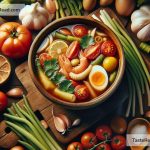How the French Coq au Vin Became a Classic
In the rich world of French cuisine, there are few dishes that capture the heart and soul of French cooking quite like Coq au Vin. This classic dish, which translates to “rooster in wine,” is a sumptuous, slow-cooked masterpiece that has been warming people’s hearts and filling their bellies for centuries. But how did Coq au Vin evolve from humble beginnings to become a beloved icon of French cuisine? Let’s take a culinary journey back in time and explore the remarkable transformation of this simple, yet sophisticated, dish.
The Humble Beginnings
The origins of Coq au Vin can be traced back to the rural regions of France, where practicality and resourcefulness were key components of daily life. In a time before refrigeration, the French countryside was teeming with chickens, but not all of them were the tender, young birds we might expect to find on our plates today. Many of the chickens were older roosters, which are tougher and less suited for quick cooking methods.
The ingenious solution to this challenge was to slow cook these older birds in wine, which not only tenderized the meat but also infused it with rich flavors. This practice likely started out of necessity, utilizing local ingredients like red wine, mushrooms, onions, and occasionally, a dash of brandy to create a stew that could feed a family or a gathering with ease. The wine not only helped in softening the meat but also acted as a preservative, extending the dish’s longevity, which was crucial in times when food scarcity could be a real problem.
Evolution into a French Classic
As the recipe traveled from the countryside into the finer kitchens of French cities, Coq au Vin began to evolve. Chefs started refining the ingredients and the cooking methods, transforming the rustic stew into a sophisticated dish that captured the essence of French culinary artistry. What began as a practical solution to a common problem had morphed into a dish celebrated for its complex flavors and elegant presentation.
It wasn’t long before Coq au Vin caught the attention of food connoisseurs and began appearing in cookbooks, further sealing its status as a classic of French cuisine. The dish’s popularity spread beyond France, capturing the imaginations of chefs and home cooks around the world. Today, Coq au Vin is not just a winter comfort food but a symbol of French culinary excellence, enjoyed in fine dining restaurants and humble homes alike.
A Recipe That Stands the Test of Time
What makes Coq au Vin so enduring? At its core, the dish exemplifies the principles of good French cooking: taking simple ingredients and elevating them through careful preparation and slow cooking. The process of making Coq au Vin—marinating the chicken in wine, browning it to perfection, and then slow cooking it with a medley of vegetables and herbs—allows the flavors to meld together in a rich,deeply satisfying way.
Another aspect of its lasting appeal is the versatility of the dish. While traditionally made with red wine, variations using white wine have become equally popular, proving that Coq au Vin can adapt to different tastes and ingredients while still remaining quintessentially French.
Bringing Coq au Vin into the Modern Kitchen
Despite its grand history, Coq au Vin is surprisingly approachable for today’s home cook. With a little patience and some basic cooking skills, anyone can create this dish in their own kitchen, bringing a taste of French culinary tradition to their table. The key is in the slow cooking, allowing the wine to work its magic on the chicken and vegetables, creating a cozy, comforting meal that’s perfect for sharing with loved ones.
As modern interpretations of the recipe continue to emerge, it’s clear that Coq au Vin has not only stood the test of time but also continues to inspire creativity in the kitchen. Whether enjoyed in a rustic farmhouse in the French countryside or a chic urban apartment, Coq au Vin remains a testament to the power of simple ingredients, slow cooking, and the enduring appeal of French cuisine.
Conclusion
From its modest beginnings to its status as a culinary icon, Coq au Vin embodies the spirit of French cooking. It is a dish that celebrates the art of transformation, turning simple, humble ingredients into a sumptuous feast that delights the senses. Its journey from the countryside to the city, from necessity to luxury, mirrors the evolution of cooking itself, reminding us that great food is not just about the ingredients but about the love and care that goes into preparing them. Coq au Vin is more than just a classic dish; it is a culinary heritage that continues to captivate and comfort, making it a timeless treasure of French cuisine.


